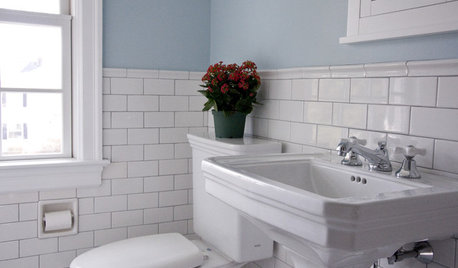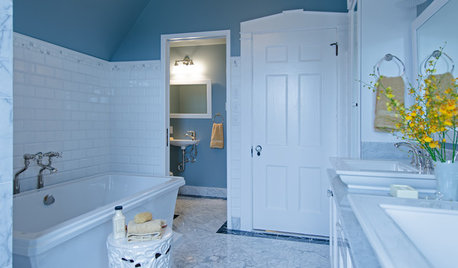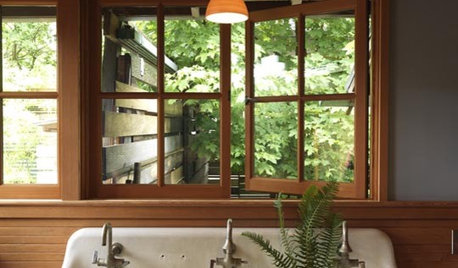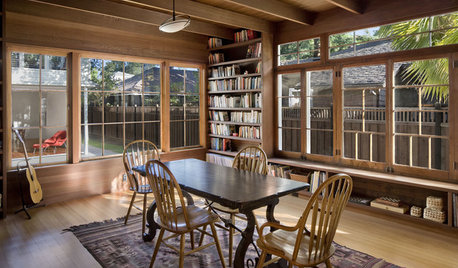Window Leaking
beachgirlok
16 years ago
Related Stories

WINDOWSSalvage Spotlight: Warehouse Windows Become a Storage Screen
Full of character but originally short on practicality, these panes in a Brooklyn loft now hide gear instead of leaking air
Full Story
BATHROOM DESIGNRoom of the Day: Renovation Retains a 1920s Bath’s Vintage Charm
A ceiling leak spurs this family to stop patching and go for the gut
Full Story
BEFORE AND AFTERSA Seattle Family Bathroom Gains Privacy and Polish
Too much togetherness, along with a major leak, leads to a full gut renovation of a 1908 bath
Full Story
REMODELING GUIDESRenovation Detail: The Casement Window
If heaving open your windows leaves you winded, let the cranks or cam handles of casement windows bring in an easier breeze
Full Story
REMODELING GUIDESReplace vs. Restore: The Great Window Debate
Deciding what to do with windows in disrepair isn't easy. This insight on the pros and cons of window replacement or restoration can help
Full Story
WINDOW TREATMENTSHow to Cover Windows Above a Radiator
Explore the window treatments — and window treatment combinations — that can work in this space
Full Story
GREAT HOME PROJECTSUpgrade Your Windows for Beauty, Comfort and Big Energy Savings
Bid drafts or stuffiness farewell and say hello to lower utility bills with new, energy-efficient windows
Full Story
DECORATING GUIDESSolve Privacy Problems With Window Film
Let the light in and keep prying eyes out with an inexpensive and decorative window film you can apply yourself
Full Story
REMODELING GUIDESUpdate Historic Windows for Charm and Efficiency
Renovate old windows to keep the character but lose the energy outflow from your home
Full Story
HOUSEKEEPINGThe Best Way to Get Your Windows Spotlessly Clean
Learn the pros’ tips and tricks for cleaning windows and getting them streak-free
Full StoryMore Discussions











ournewhouse
jeff_nj
Related Professionals
Morganton Architects & Building Designers · Bloomingdale Design-Build Firms · New River Home Builders · Newark Home Builders · Yorkville Home Builders · Athens General Contractors · Coffeyville General Contractors · Fargo General Contractors · Goldenrod General Contractors · Jeffersonville General Contractors · Ken Caryl General Contractors · Leavenworth General Contractors · Red Wing General Contractors · Riverdale General Contractors · Woodland General Contractorsjca1
worthy
beachgirlokOriginal Author
mightyanvil
jca1
lyfia
beachgirlokOriginal Author
chapnc
chiefneil
beachgirlokOriginal Author
jca1
teresa_b
lyfia
mightyanvil
FatHen
mightyanvil
covenantbuilders
emmachas_gw Shaffer